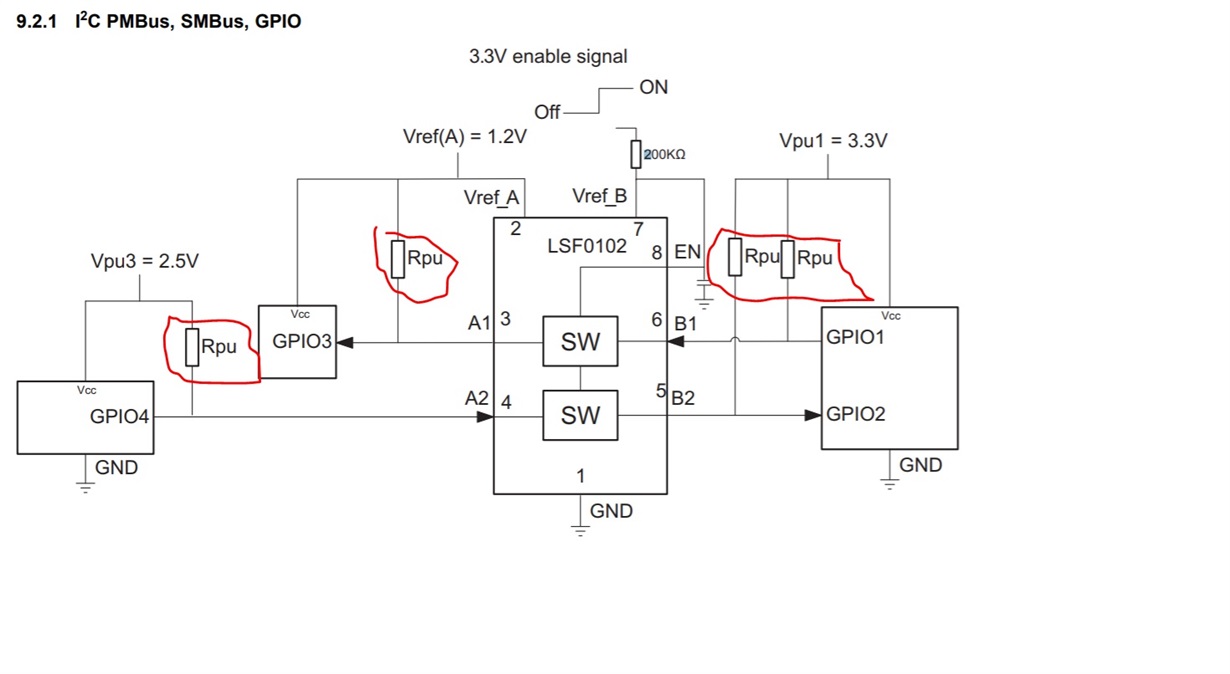Other Parts Discussed in Thread: SN74AVC4T774
Hello team,
Our customer is evaluting LSF0108 for one 100MHz SPI applicaiotn, so would you like to help us double check below questions?
1. SPI length constraint is 4000mils. If the signal pass through LSF0108PWR, the output SPI are re-estimate signals length, or not?
2. How to select pull up Rpu resistor? In SPI case, input and output signals are both pull resistor, or not?
Thanks,
Antony


